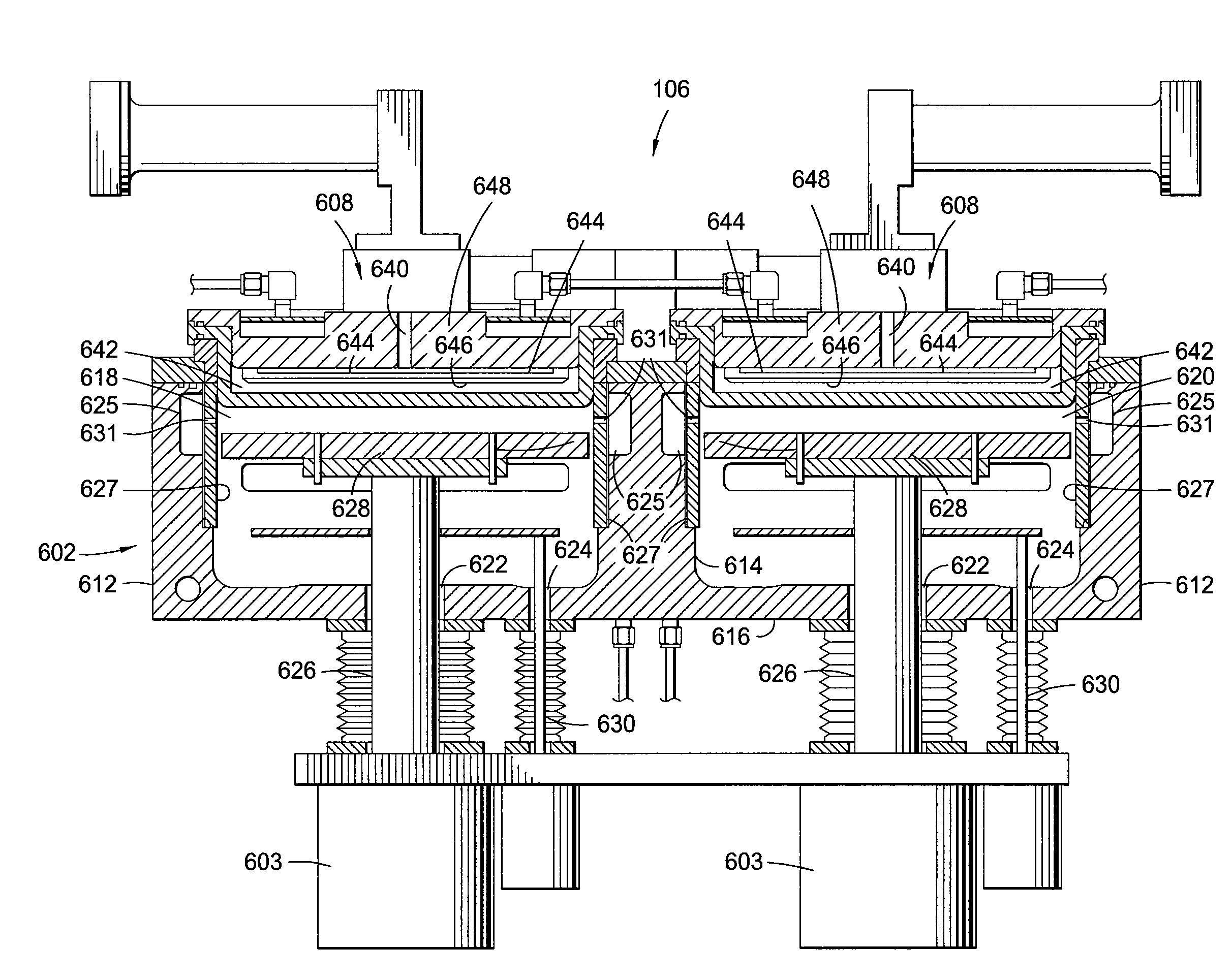Pecvd multi-step processing with continuous plasma
- Summary
- Abstract
- Description
- Claims
- Application Information
AI Technical Summary
Benefits of technology
Problems solved by technology
Method used
Image
Examples
Embodiment Construction
[0020]The present invention provides a method for reducing defects formed during multi-layer deposition within a processing chamber. Films that can benefit from this process include dielectric materials such as silicon oxide, silicon oxynitride, or silicon nitride films that may be used as a dielectric antireflective coating (DARC). In one embodiment, the defect control is realized by maintaining a continuous plasma between each deposition step such that any particles formed during the previous deposition or flaking off from the surfaces of the processing chamber are suspended in the plasma, preventing unwanted particles from falling on the substrate. The unwanted particles will remain suspending in the plasma until the final layer deposition is finished and be removed by a purging and pumping steps to minimize chances of contaminating the substrate during the entire deposition process. In another embodiment, an inert gas is continuously flowing into the processing chamber to mainta...
PUM
| Property | Measurement | Unit |
|---|---|---|
| Power | aaaaa | aaaaa |
| Power | aaaaa | aaaaa |
| Frequency | aaaaa | aaaaa |
Abstract
Description
Claims
Application Information
 Login to View More
Login to View More - R&D
- Intellectual Property
- Life Sciences
- Materials
- Tech Scout
- Unparalleled Data Quality
- Higher Quality Content
- 60% Fewer Hallucinations
Browse by: Latest US Patents, China's latest patents, Technical Efficacy Thesaurus, Application Domain, Technology Topic, Popular Technical Reports.
© 2025 PatSnap. All rights reserved.Legal|Privacy policy|Modern Slavery Act Transparency Statement|Sitemap|About US| Contact US: help@patsnap.com



